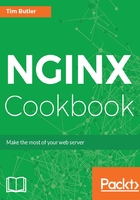
上QQ阅读APP看书,第一时间看更新
Getting ready
To compile PHP code and run it via NGINX, the preferred method is via PHP-FPM, a high-speed FastCGI Process Manager. We'll also need to install PHP itself and, for the sake of simplicity, we'll stick with the OS-supplied version. Those seeking the highest possible performance should ensure they're running PHP 7 (released December 3, 2015), which can offer a 2-3 times speed improvement for WordPress, while at the same time being up to four times more memory efficient compared to PHP 5.6.
To install PHP-FPM, you should run the following on a Debian/Ubuntu system:
apt-get install php7.0-fpm
For those running CentOS/RHEL, you should run the following:
sudo yum install php-fpm
As PHP itself is a prerequisite for the php-fpm packages, it will also be installed.
Note: Other packages such as MySQL will be required if you're intending to run this on a single VPS instance. Consult the WordPress documentation for a full list of requirements.